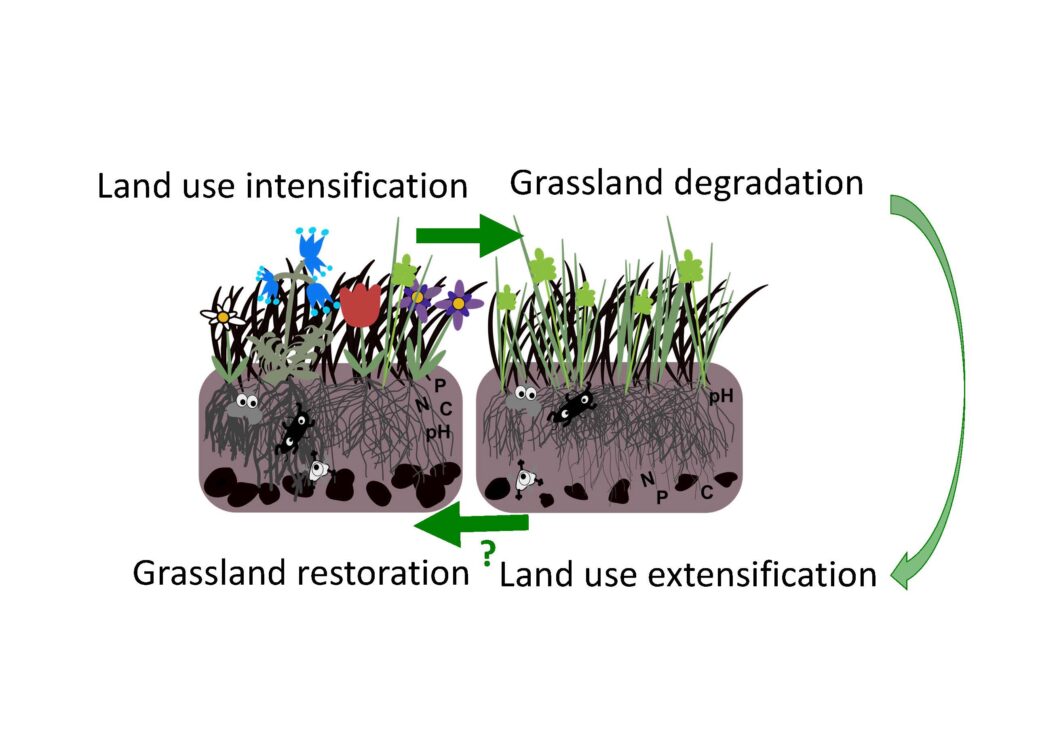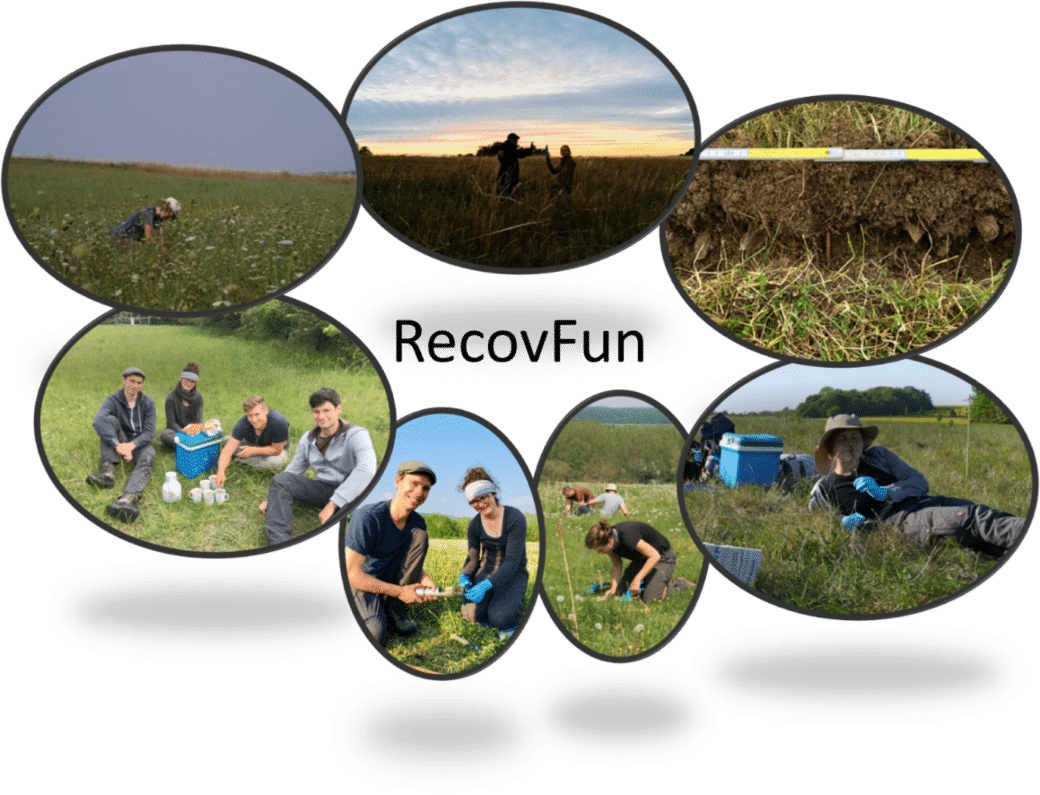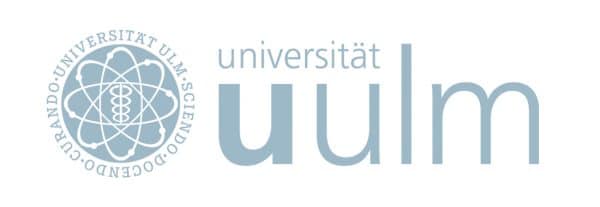Recovery mechanisms of above and belowground diversity and function of grassland, following reduction in intensity of land use

Grasslands cover large portions of the Earth’s surface, especially agricultural land, and have a large capacity for the support of global biodiversity, ecosystem function, and service provision. However, the continuing and intense levels of degradation that threaten many grasslands have led to an urgent requirement for efficient and cost-effective ecosystem restoration measures.
Landuse extensification could be the straightest forward restoration strategy to reverse grassland degradation through intensive management. This is because it builds on the idea that reestablishment of land-use intensities of a target reference grassland system will lead to the natural recovery of species rich plant communities, associated ecosystem functions and services. However, the mechanisms, timeframes and potential underlying extensification as a restoration measure to combat grassland degradation are unclear, limiting the ability to decide when its use as a tool for ecosystem restoration to improve grassland diversity, function and service provisioning is appropriate.
To gain a comprehensive understanding of the potential of grassland extensification to combat grassland degradation, the mechanisms through which grassland extensification works need to be specifically investigated. For this we need to take a holistic view of the ecosystem including multi-trophic interactions, functional diversity, ecosystem functions and services.
The goals and research questions of the project can be divided into three tasks:
Task 1: Identification of extensification potential against a holistic set of restoration goals
- Detection of context dependencies of the extensification potential with regard to management intensity and environmental conditions.
Task 2: Analyse the mechanisms of extensification effects on grassland diversity, functions, and services
- Quantify the changes in the most relevant environmental gradients, such as nutrient, light, and microsite availability.
- Analyse the relationship of above- and below-ground plant properties, mycorrhizal symbiosis, and biomass production.
- Analyse the relationship of above and below ground plant properties, soil microbial communities, and nutrient efficiency.
Task 3: Develop scenarios and management guidelines for optimal benefits of grassland extensification as a restoration measure
- The knowledge gained under Tasks 1 and 2 will be synthesized to recommend or predict contexts and timeframes in which grassland extensification can be most beneficial as a grassland restoration tool.
The exclusion of fertilisation and experimental reduction of grazing and mowing intensity on 45 EP sites in the REX experiment provides an excellent framework to study the effect of extensification on biodiversity and ecosystem functioning in comparison with the related EPs with ongoing usual land use. Furthermore, we will use the LUX experiment in which only fertilisation is excluded on further 16 plots to disentangle the individual effects of fertilisation on the one hand and mowing and grazing on the other hand.
Data on plant species composition and biomass quality will be collected in collaboration with the botany core project. To quantify the changes in stand structure, light penetration, and microsite availability that occur over the course of extensification, we will measure vertical profiles of photosynthetically active radiation. We will make measurements of above and below ground functional traits representative of the entire plant community. Soil samples from the rhizosphere will be analysed for bacterial, archaeal, and fungal community composition and diversity using molecular methods. The functioning of the ecosystem will be assessed by the nutrient cycling dynamic in the soil which has been shown to be a good proxy of the ecosystem’s ability to deliver multiple ecosystem functions. As the turnover of nutrients and organic material is mediated by extracellular enzymes produced mainly by soil microorganisms, we use enzyme kinetics to describe the degradation of soil organic matter and the release of carbon and nutrients.
This approach allows us to establish detailed linkages between above- and below-ground plant community properties that can be linked to measures of environmental gradients, soil microbial communities, and ecosystem functions.










